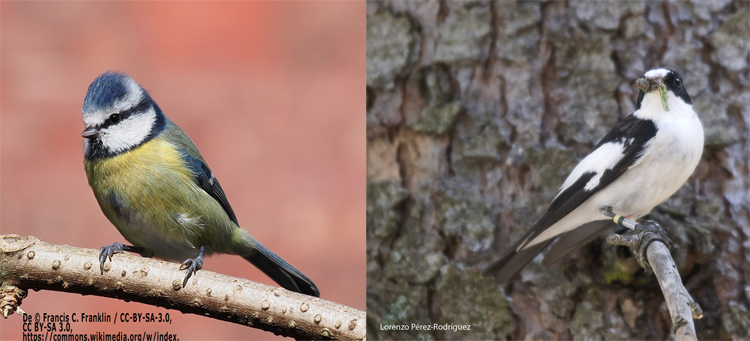The adjustment to climate change and the differential effects of temperature on resident and migratory birds were studied using the start dates of the laying in ten long-term studies in nest-boxes in Europe with data on at least one species of resident tit ??and one species of migratory flycatcher. Resident tit populations advanced their breeding more strongly in relation to temperature increases than migratory flycatchers. The divergence was strongest in the lower latitudes where the interval between tits and flycatchers is smaller and winter conditions are more favourable for residents. The phenological adjustment of flycatchers to climate change seems to be progressively further hampered by competition with resident species. The differential effect of climate change on groups of species with superimposed reproductive ecology affects the phenological interval between them, impinging on interspecific interactions. informacion[at]ebd.csic.es Samplonius et al. (2018) Phenological sensitivity to climate change is higher in resident than in migrant bird populations among European cavity breeders; Global Change Biol https://doi.org/10.1111/gcb.14160
https://onlinelibrary.wiley.com/doi/epdf/10.1111/gcb.14160
Welcome
Welcome to the official website of the Doñana Biological Station (EBD-CSIC)...

The Doñana Biological Station: EBD-CSIC
The Doñana Biological Station is a public Research Institute belonging to the Spanish Council for Scientific Research CSIC in the area of Natural Resources...

Mission
Our fundamental mission is to carry out multidisciplinary research of the highest standard directed to understanding the way in which biodiversity is generated, maintained and deteriorates, as well as the consequences of its loss...

Our methods
We apply many techniques within a multidisciplinary framework, from molecular genetics to remote sensing, and from modelling to physiological and isotopic analyses...

Monitoring the environment
Monitoring biodiversity at the Doñana Natural Space cover a wide range of communities, including both terrestrial and aquatic organisms...

Aims
Our aims include the study of the ecological and evolutionary processes by combining field work, mathematical and statistical models and physiological and genetic analysis...
 News
News
 Las altas temperaturas están provocando que las lagunas y las marismas de Doñana pierdan agua rápidamente
Las altas temperaturas están provocando que las lagunas y las marismas de Doñana pierdan agua rápidamente
 Traffic noise causes lifelong harm to baby birds
Traffic noise causes lifelong harm to baby birds
 Illegal wildlife trade, a serious problem for biodiversity and human health
Illegal wildlife trade, a serious problem for biodiversity and human health
 Urbanization and loss of woody vegetation are changing key traits of arthropod communities
Urbanization and loss of woody vegetation are changing key traits of arthropod communities
The loss of woody areas is linked to a decline in the duration of the activity period, a higher tolerance to drought, and less dispersal capacity in both groups.






